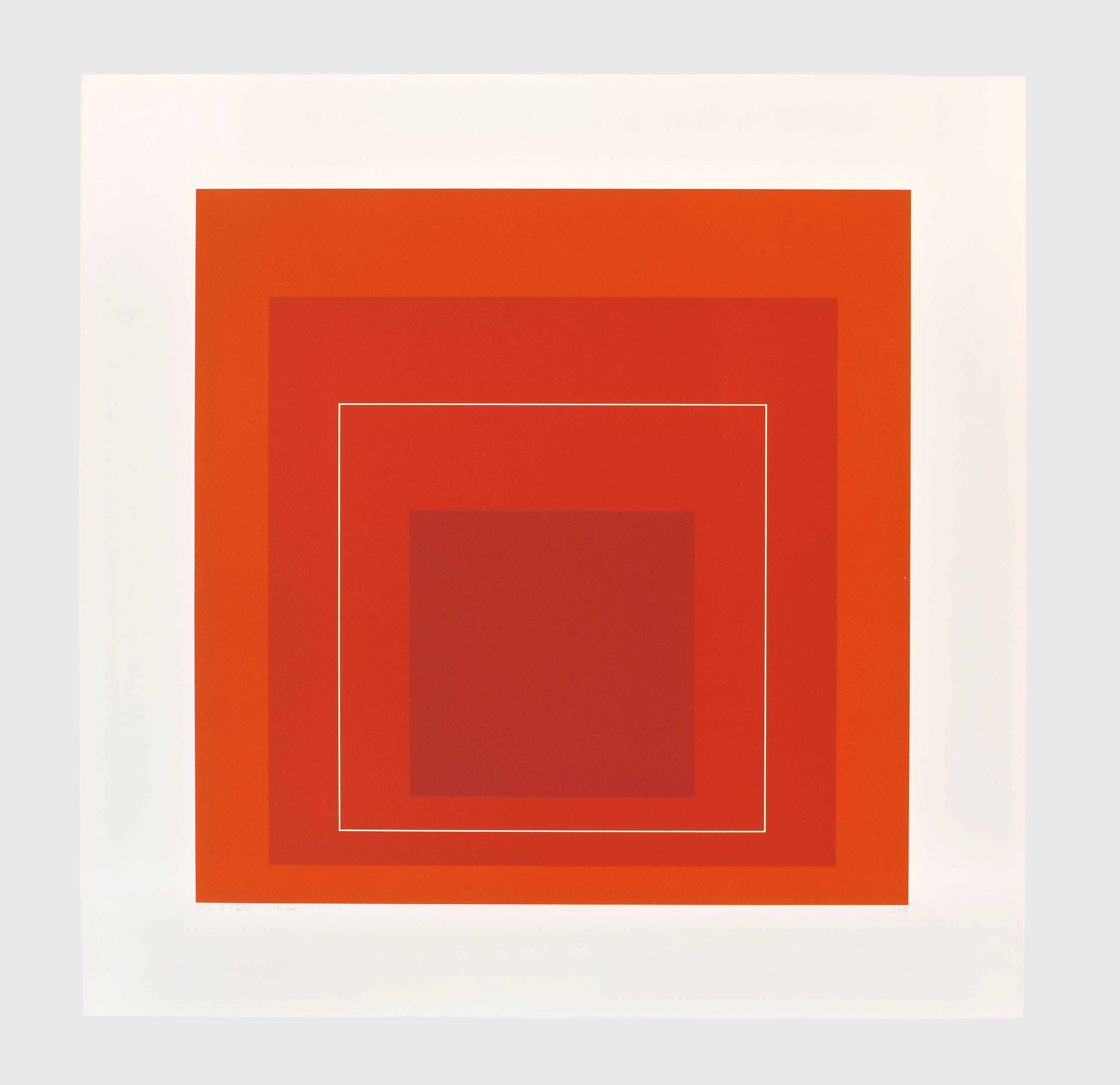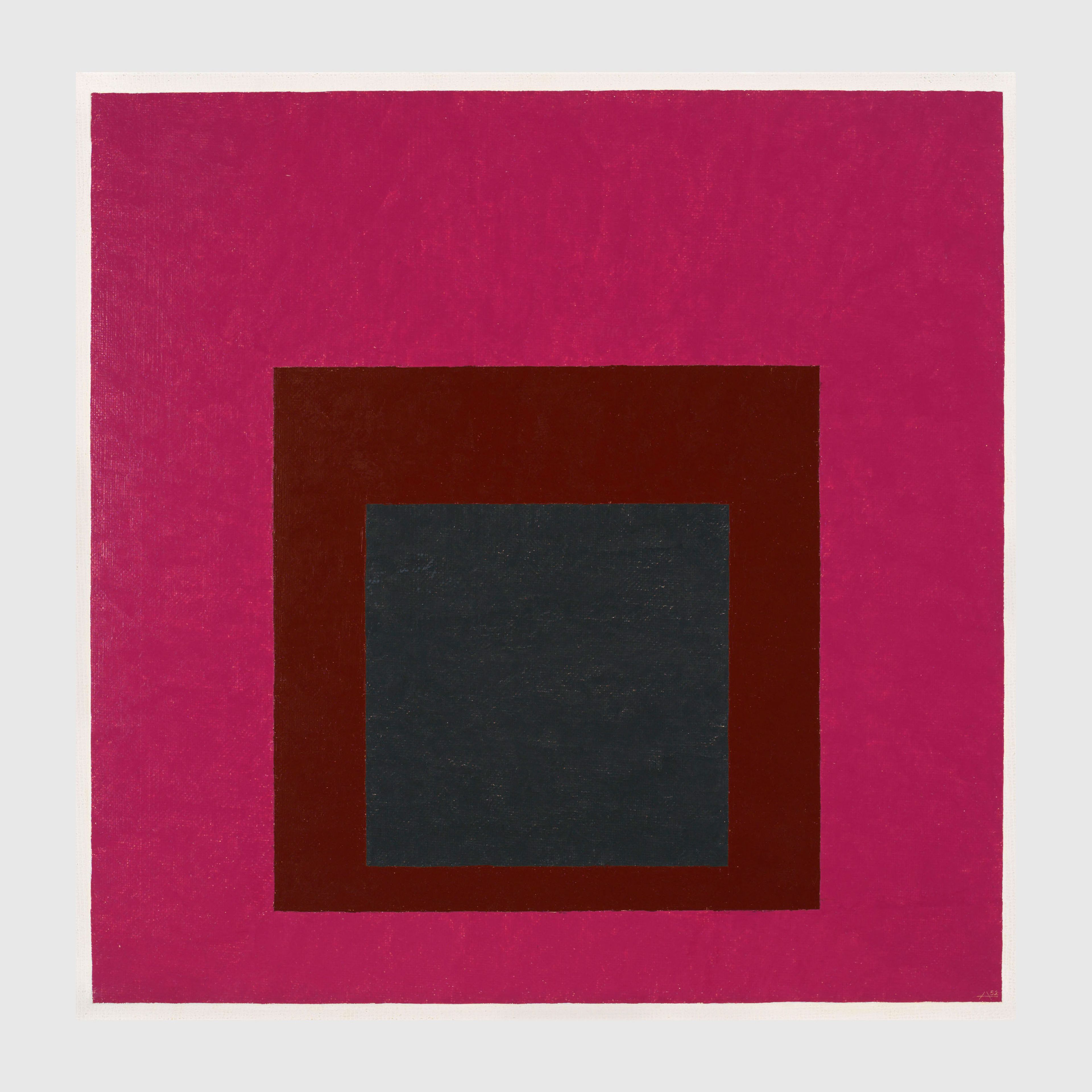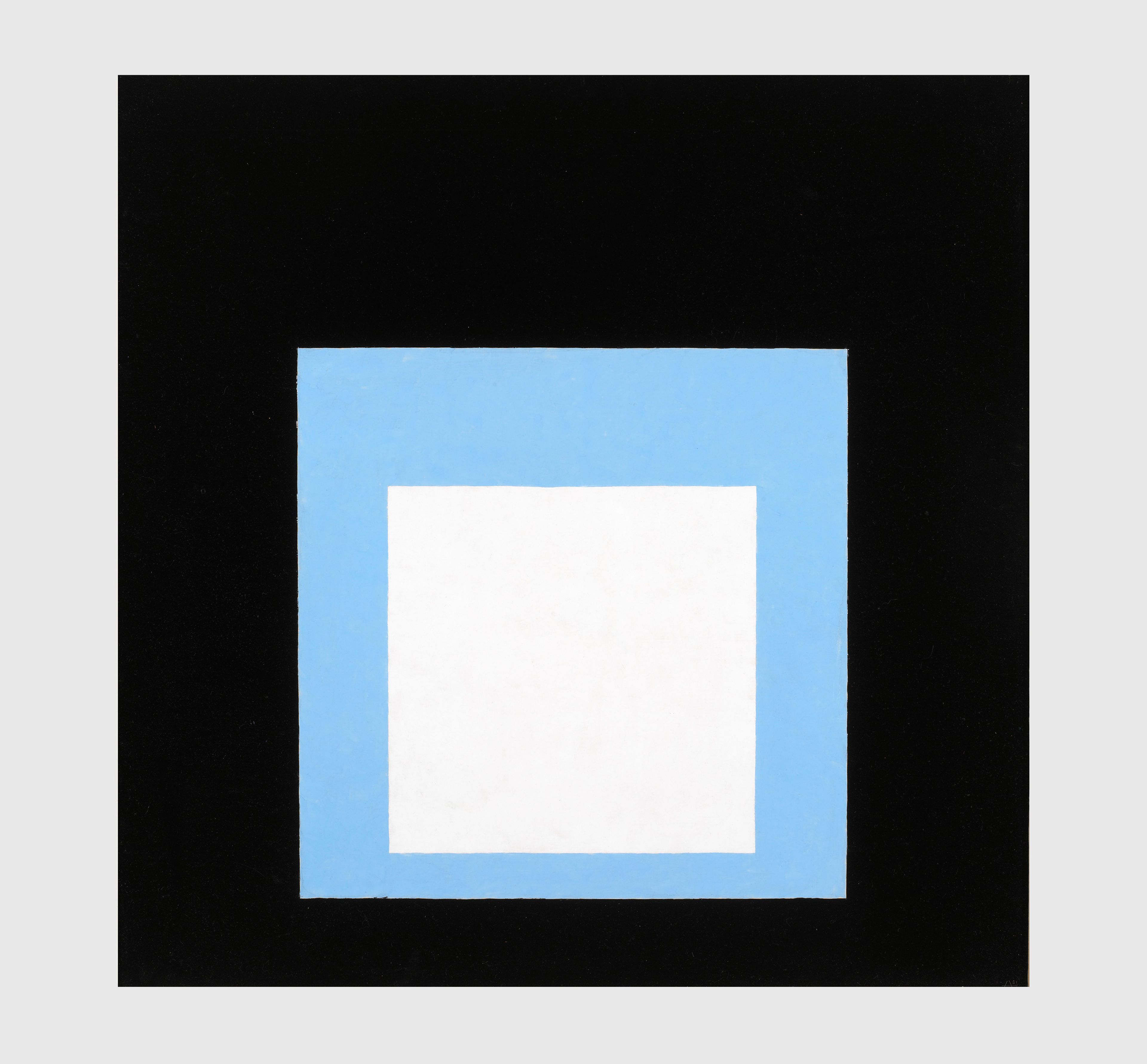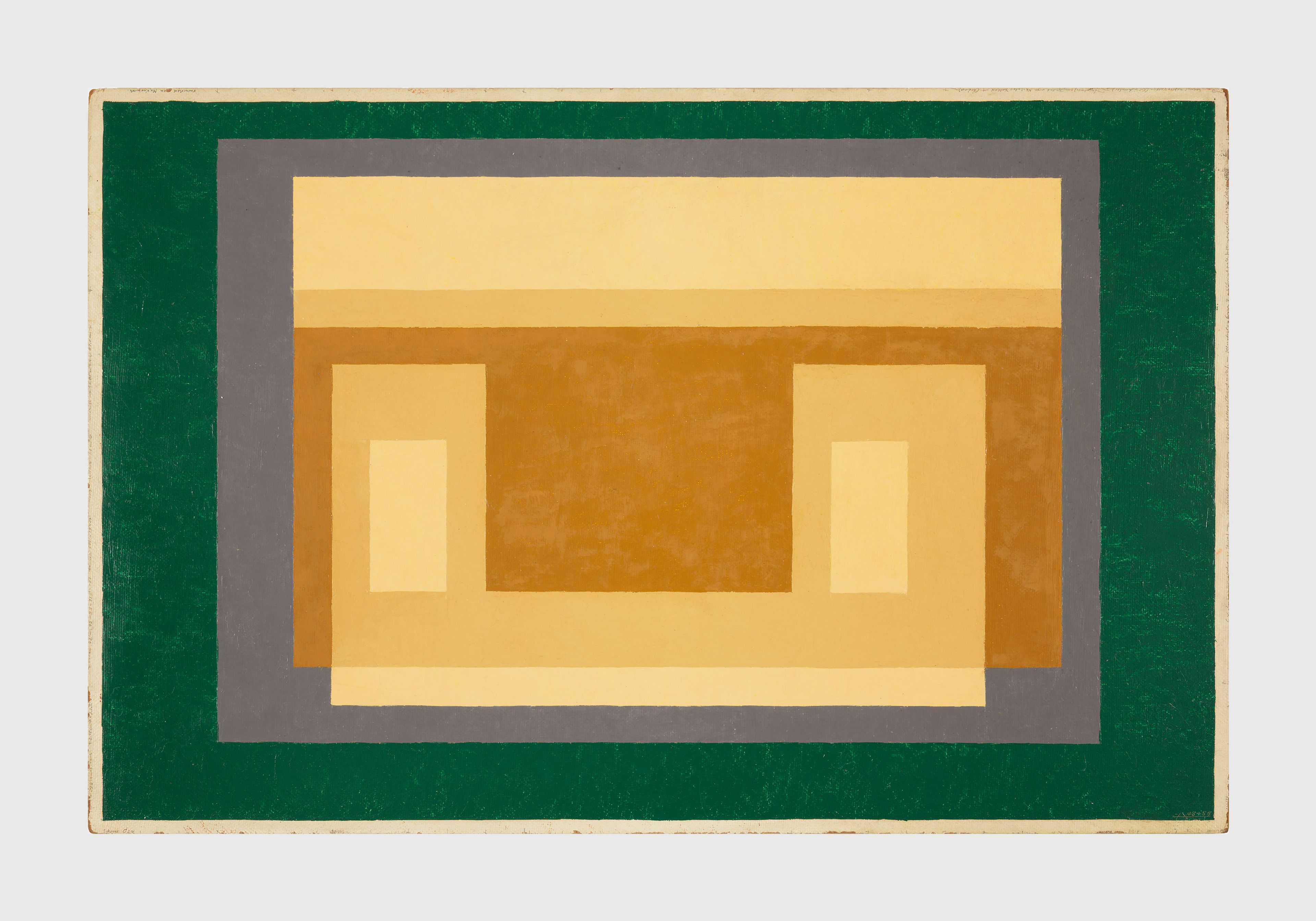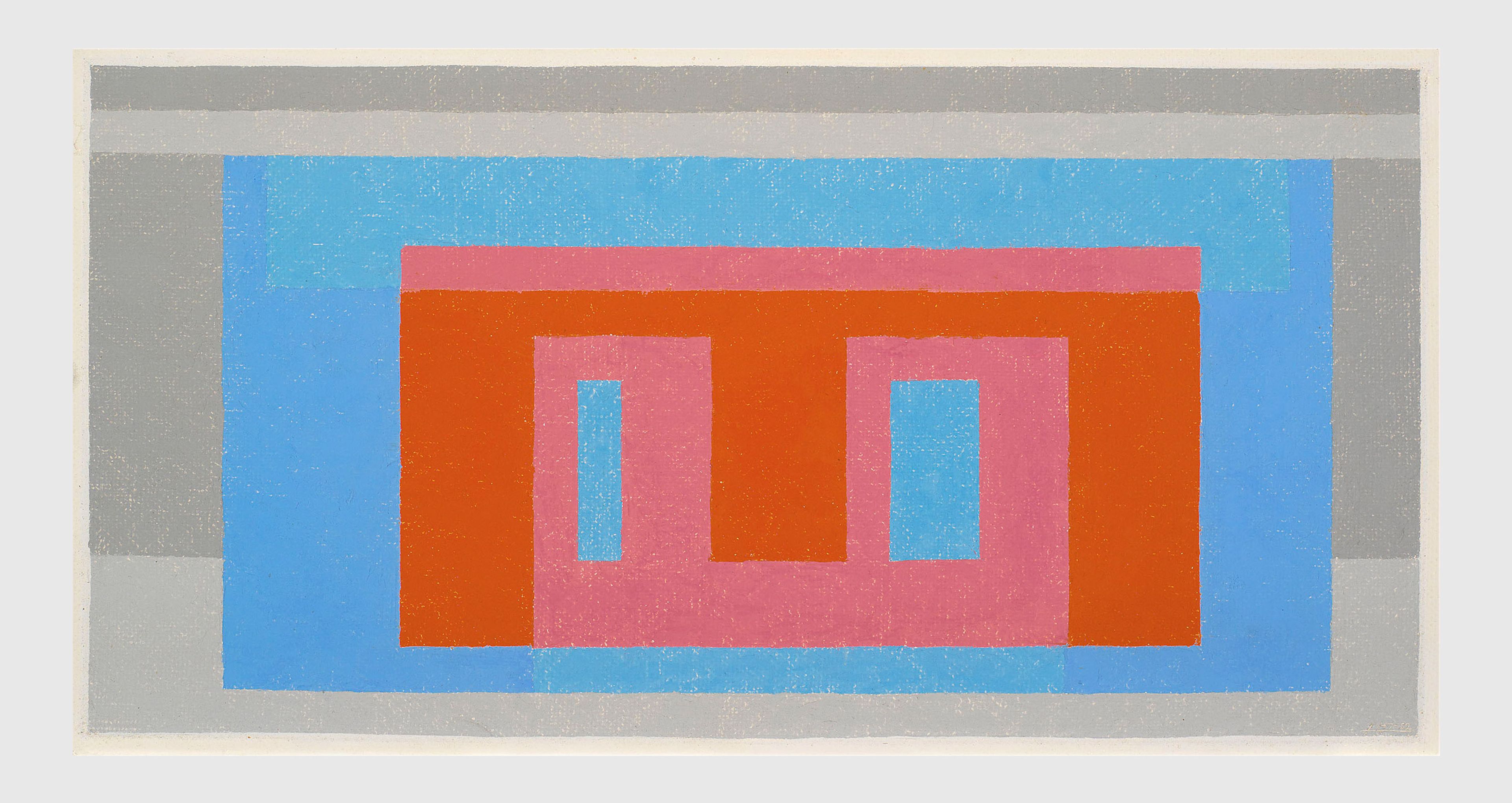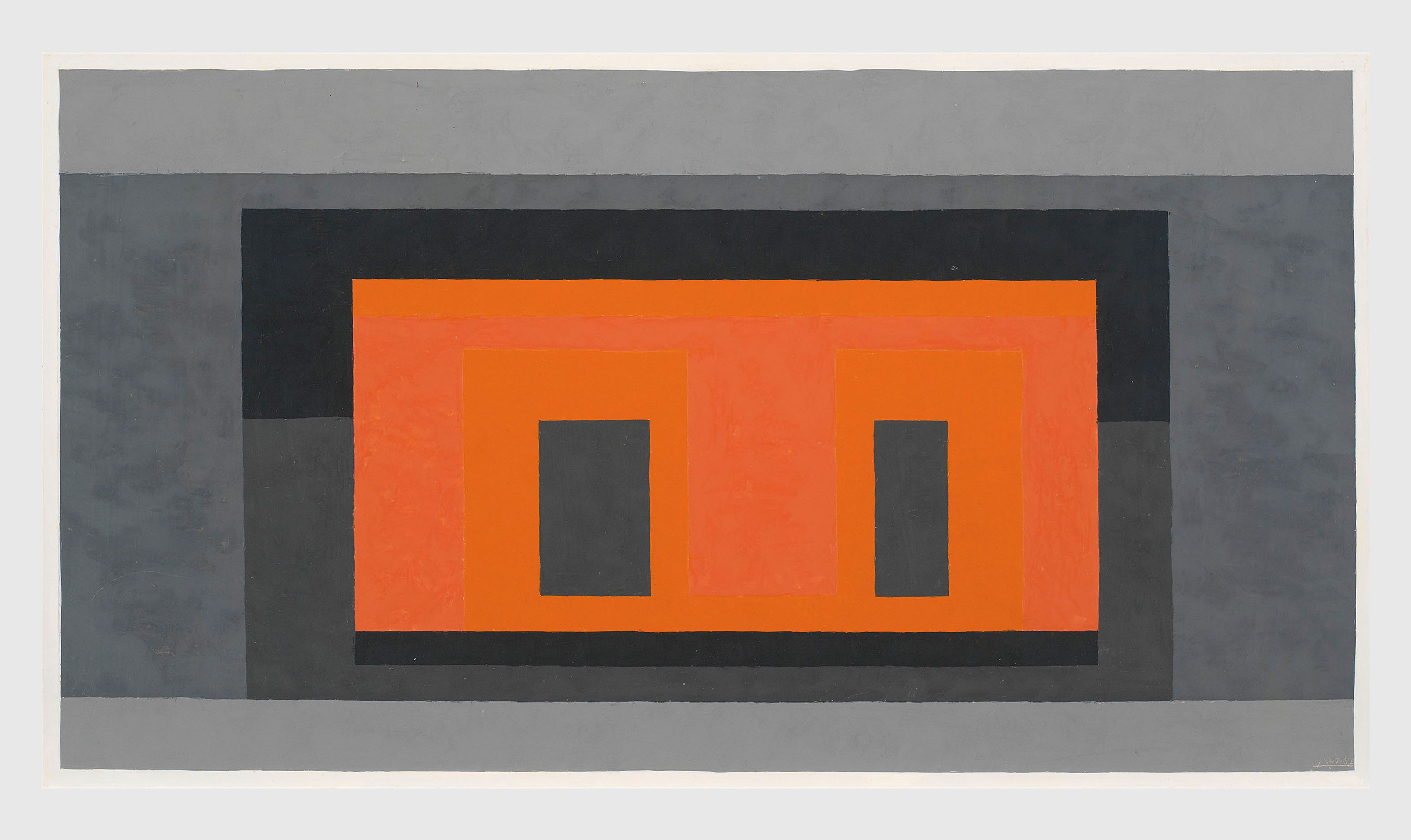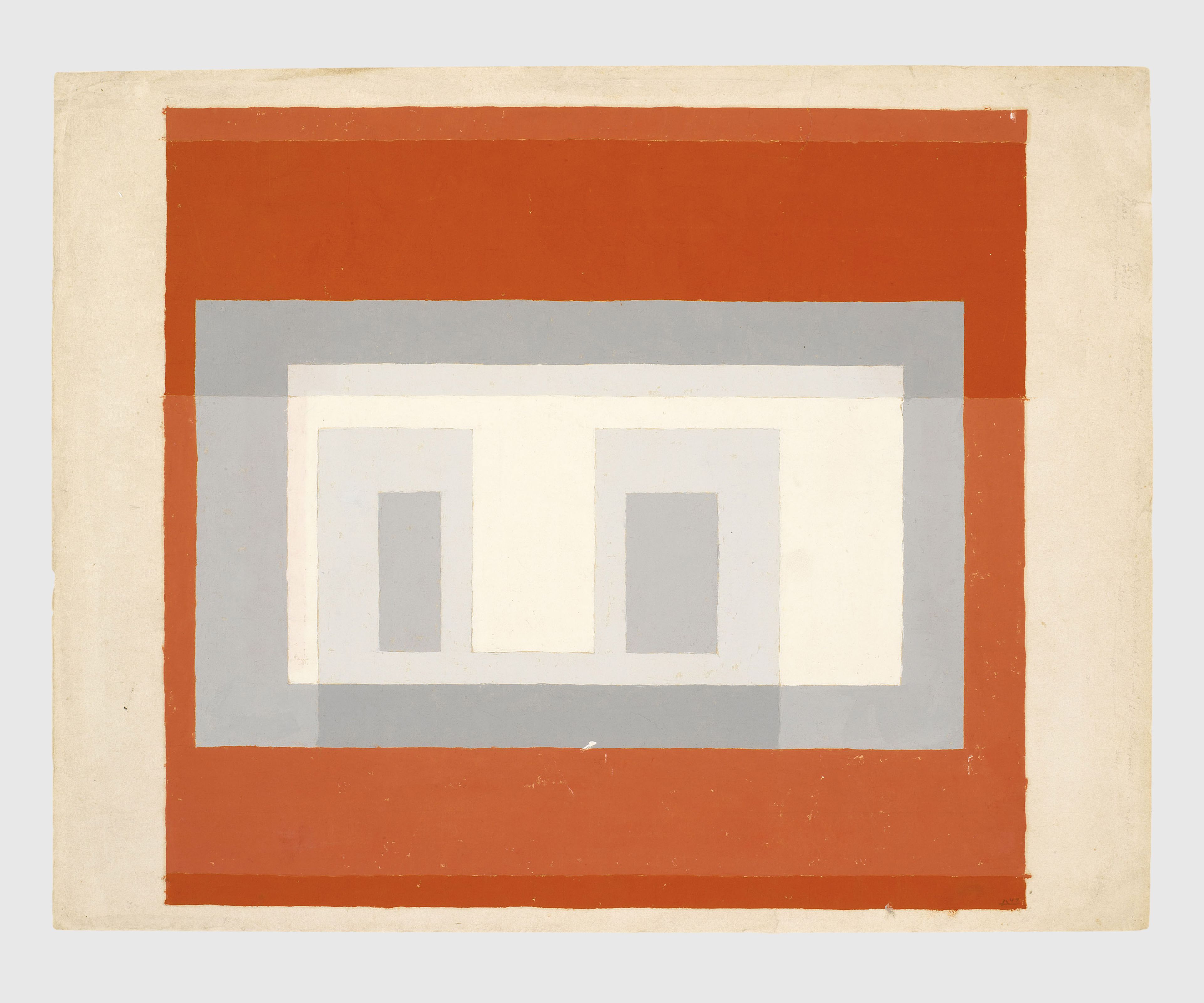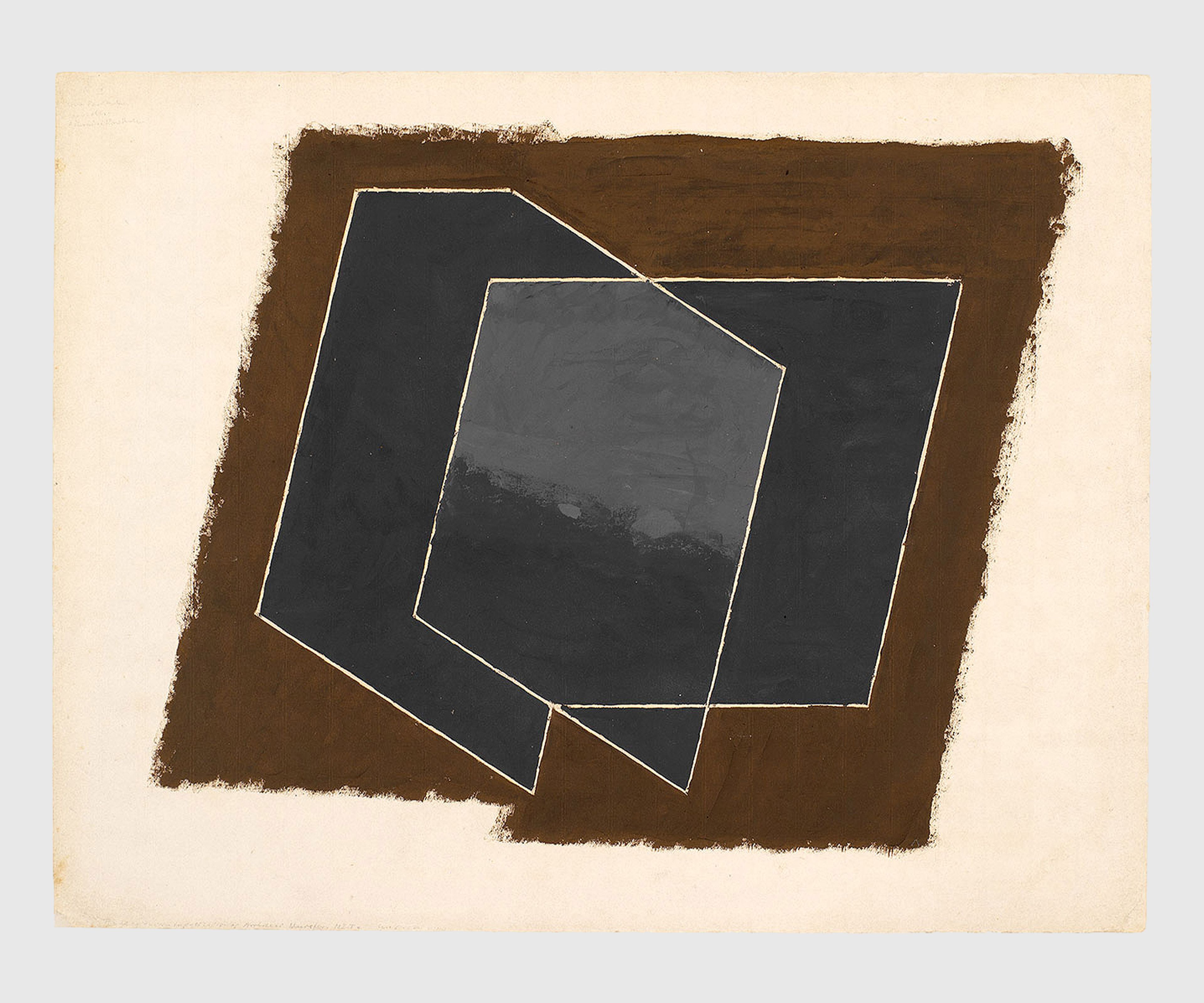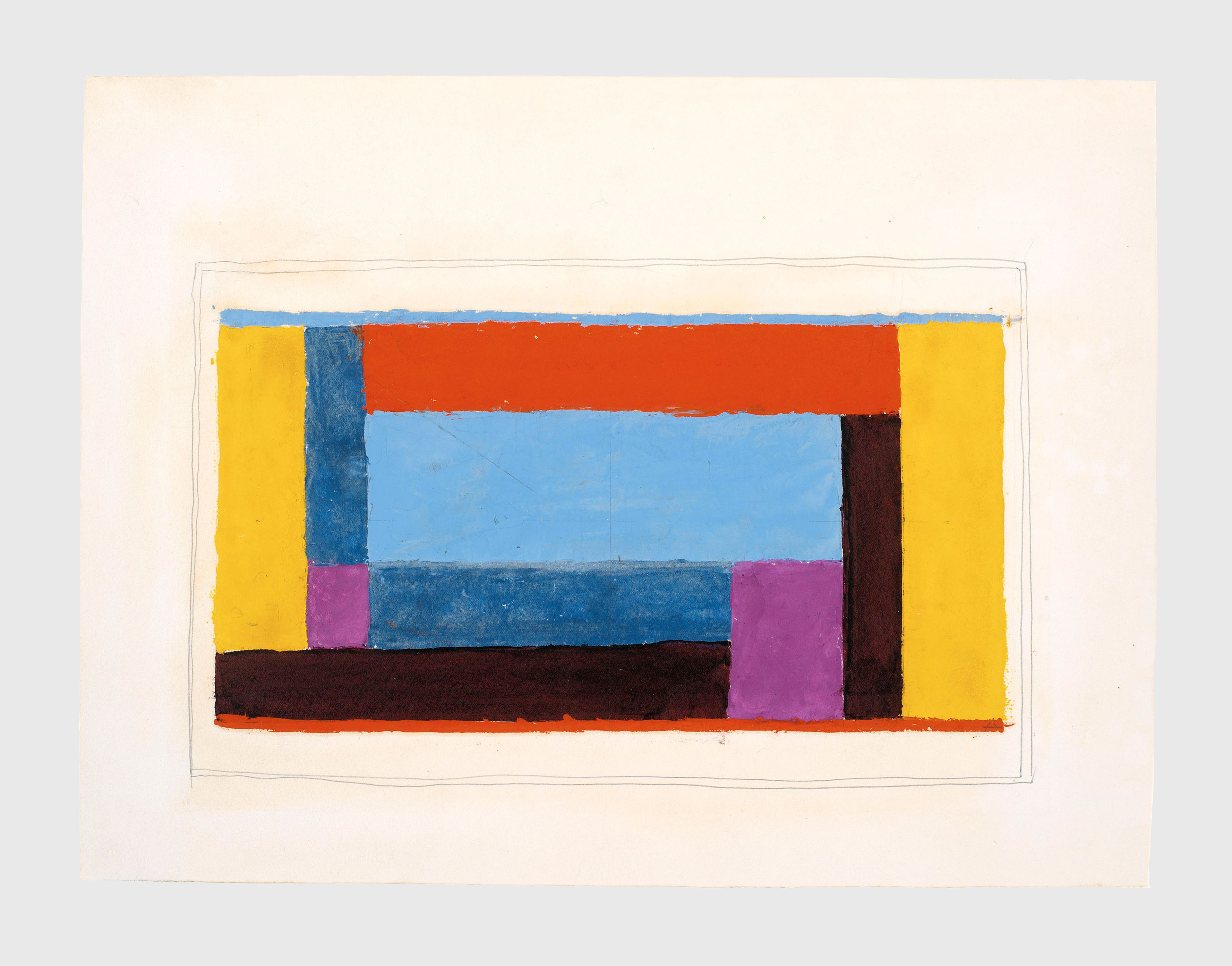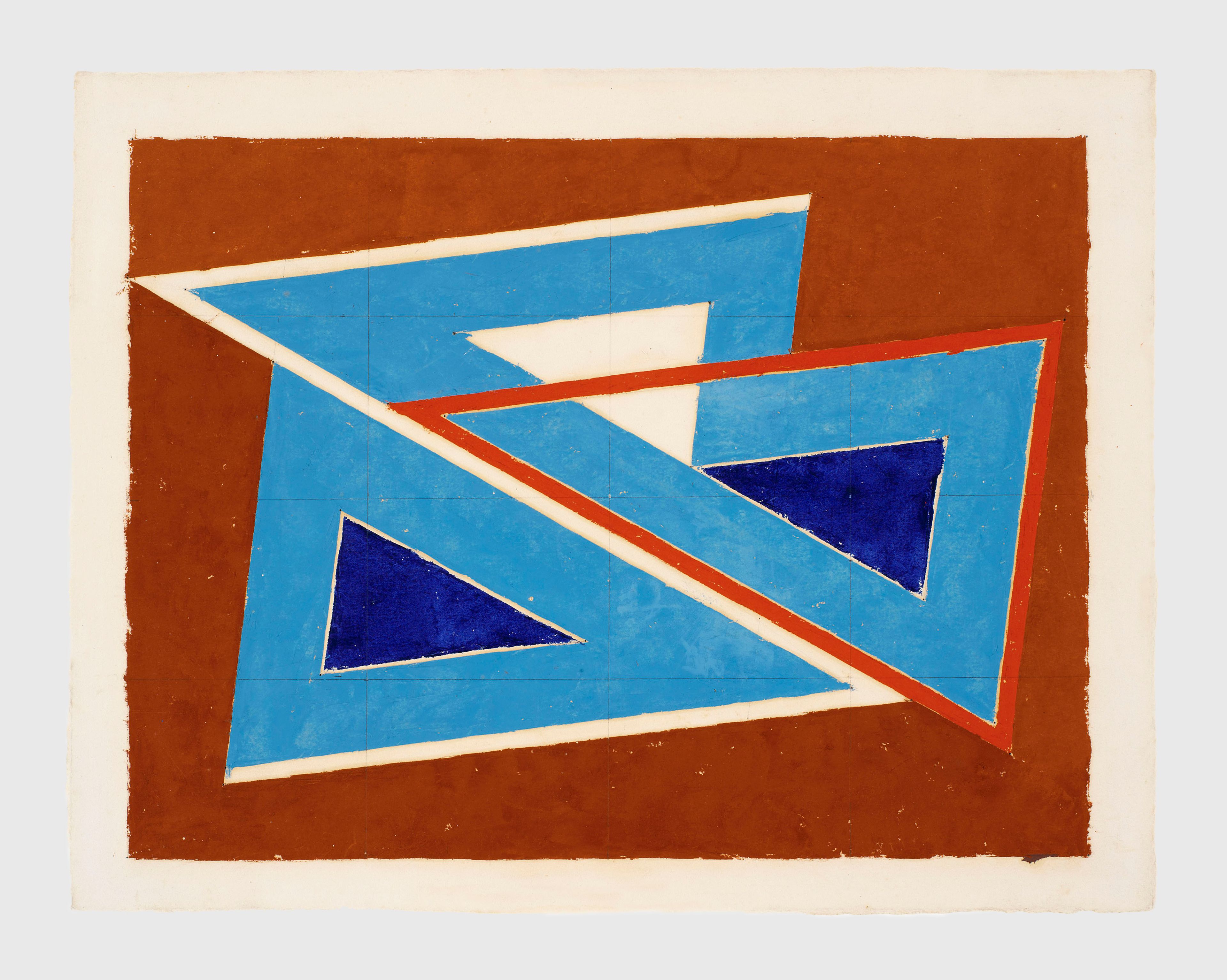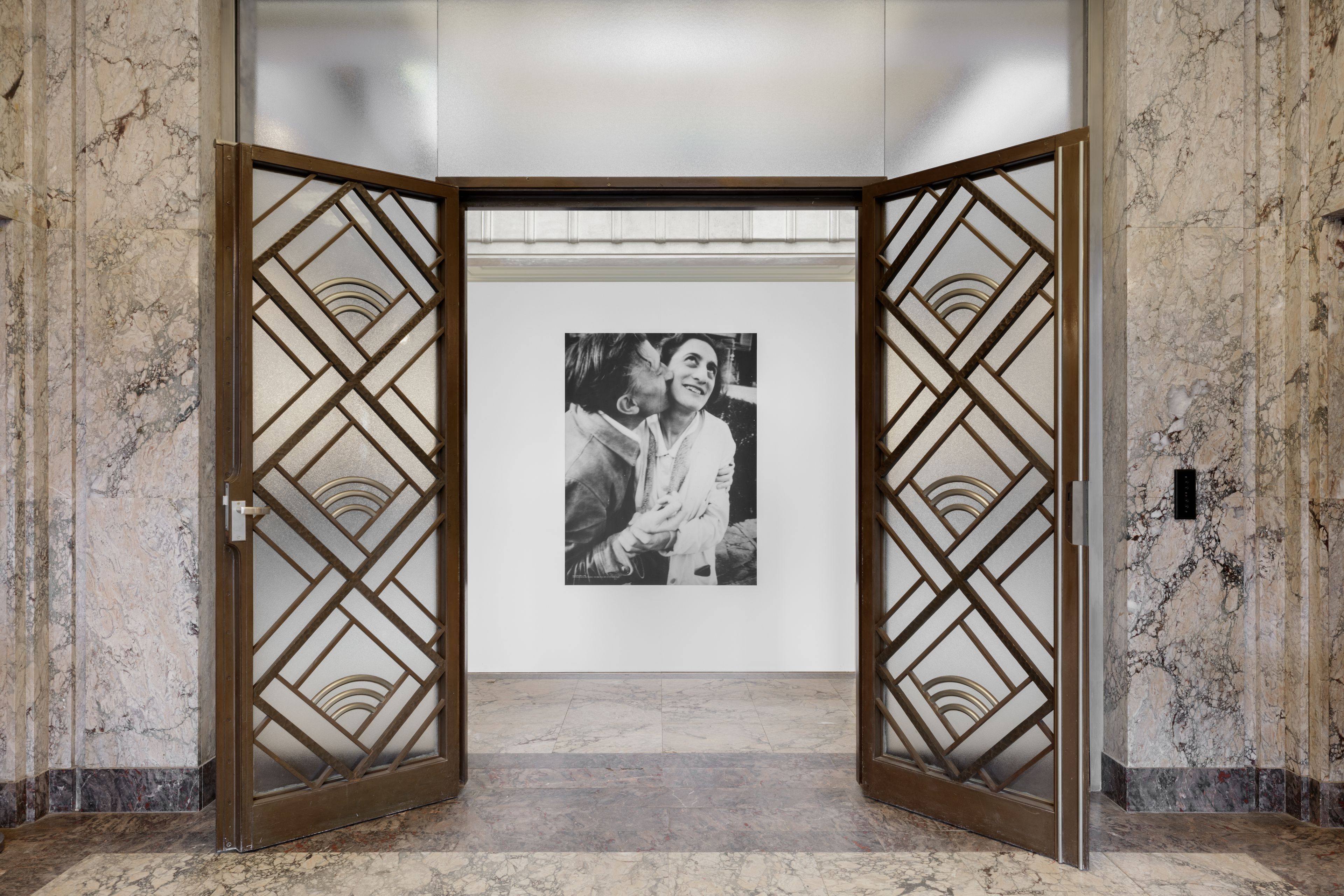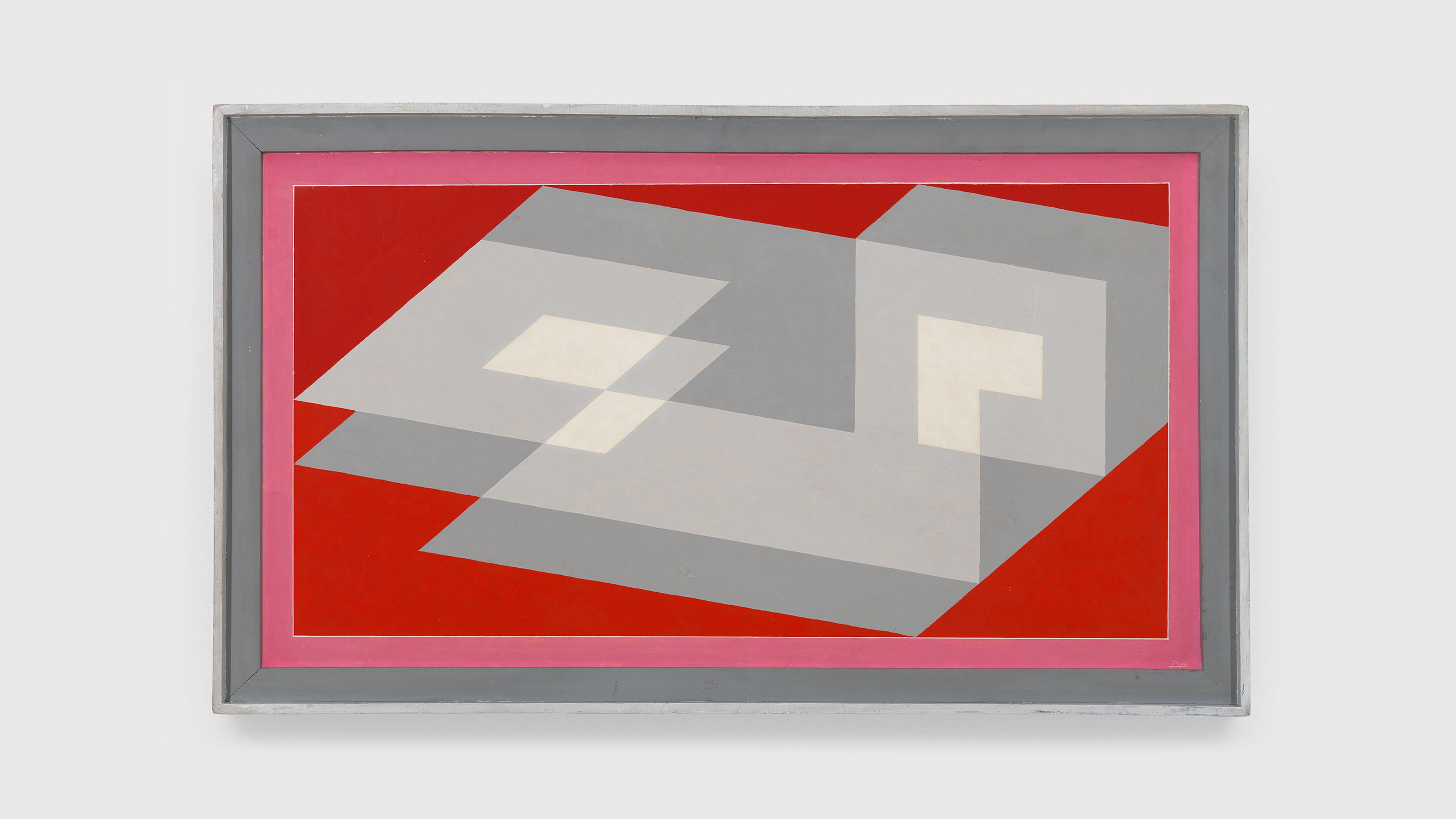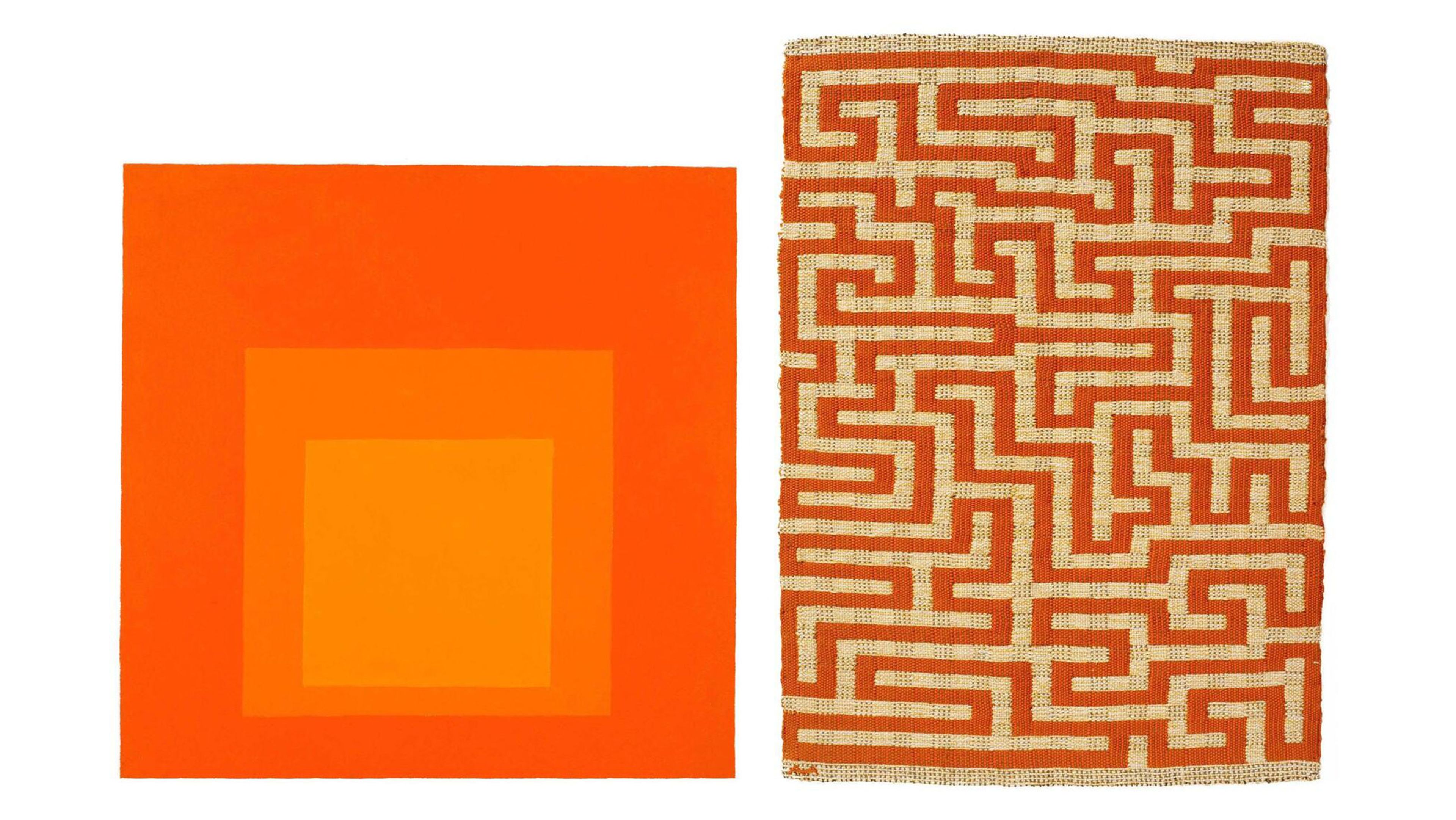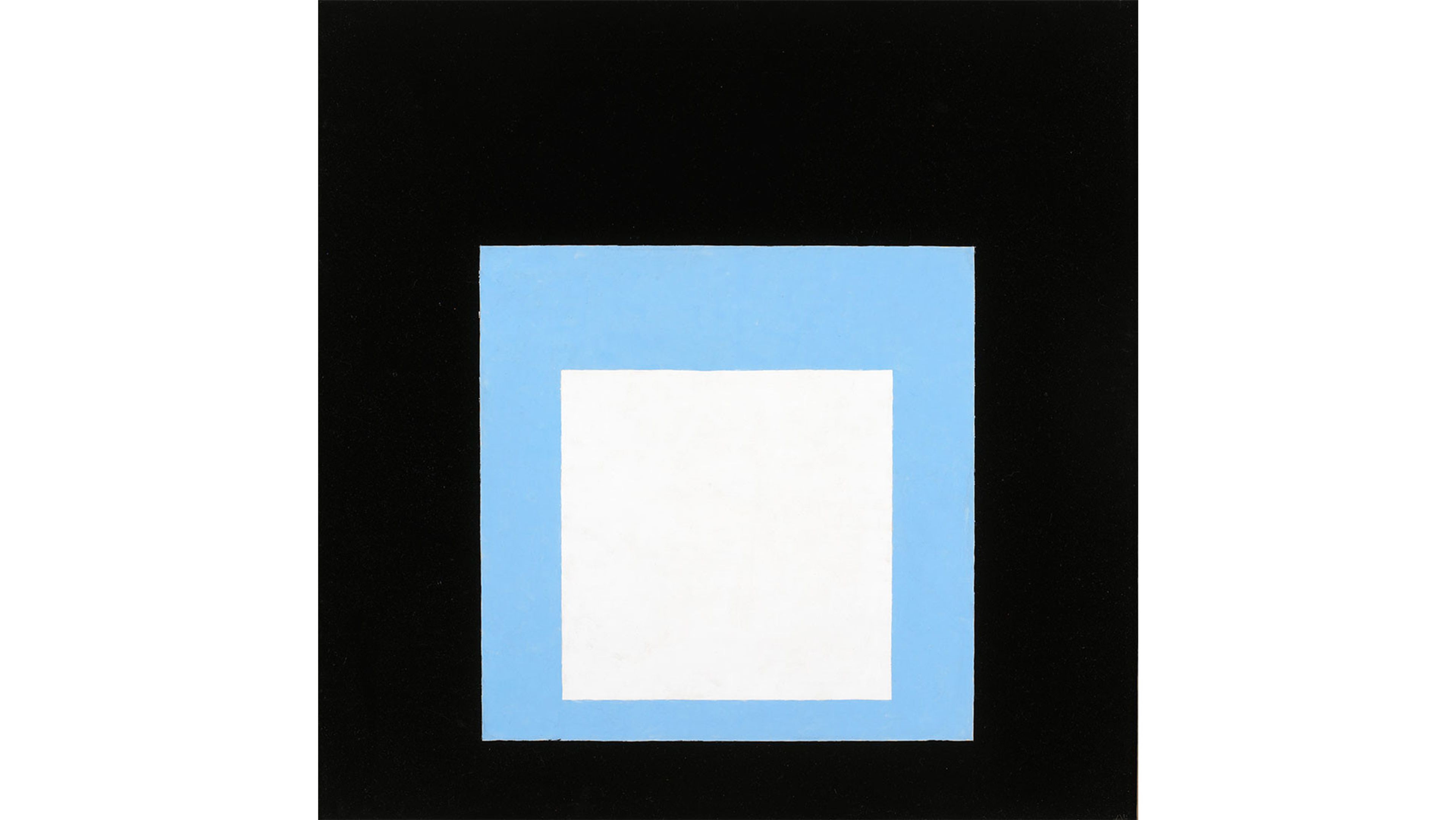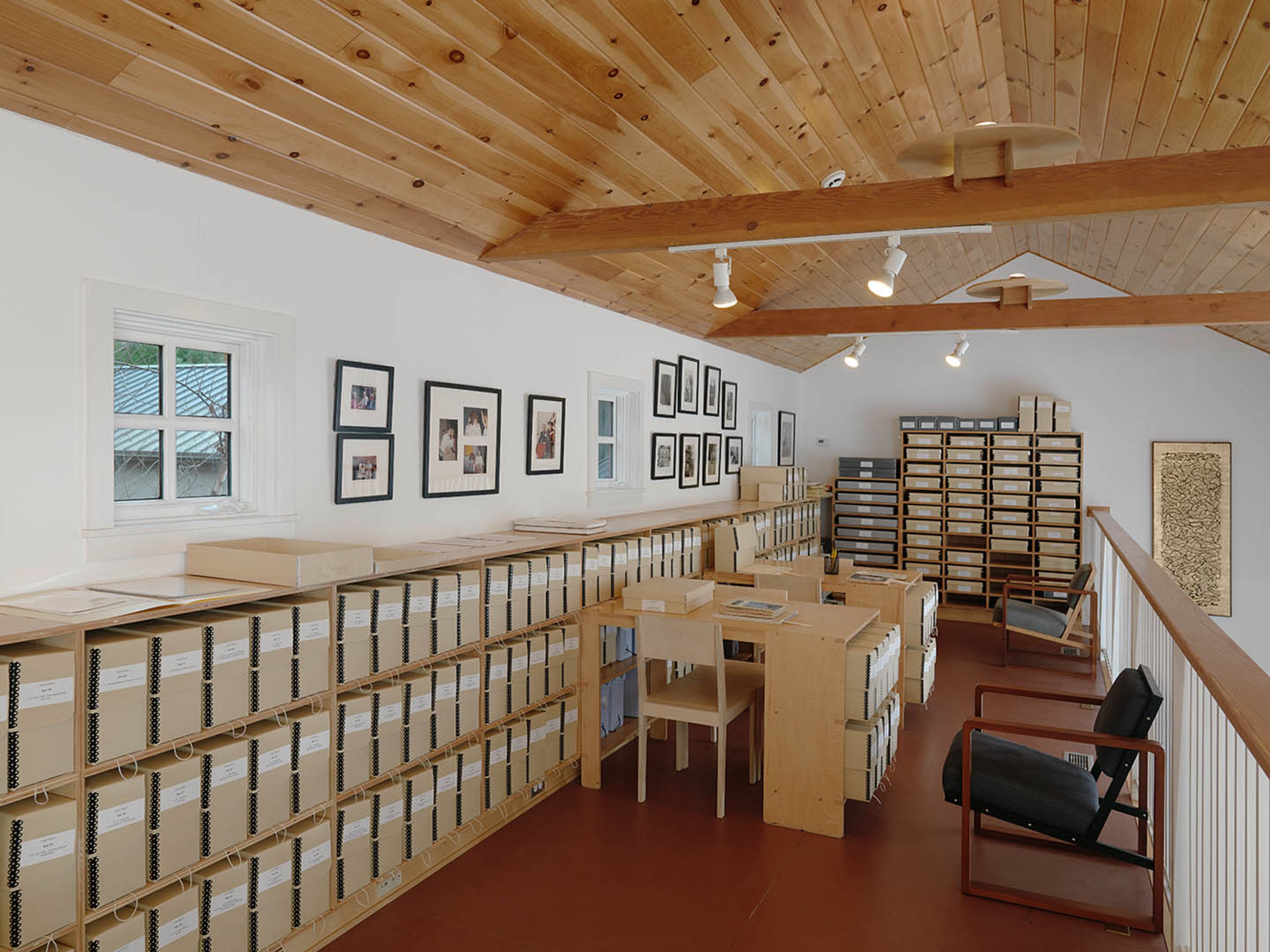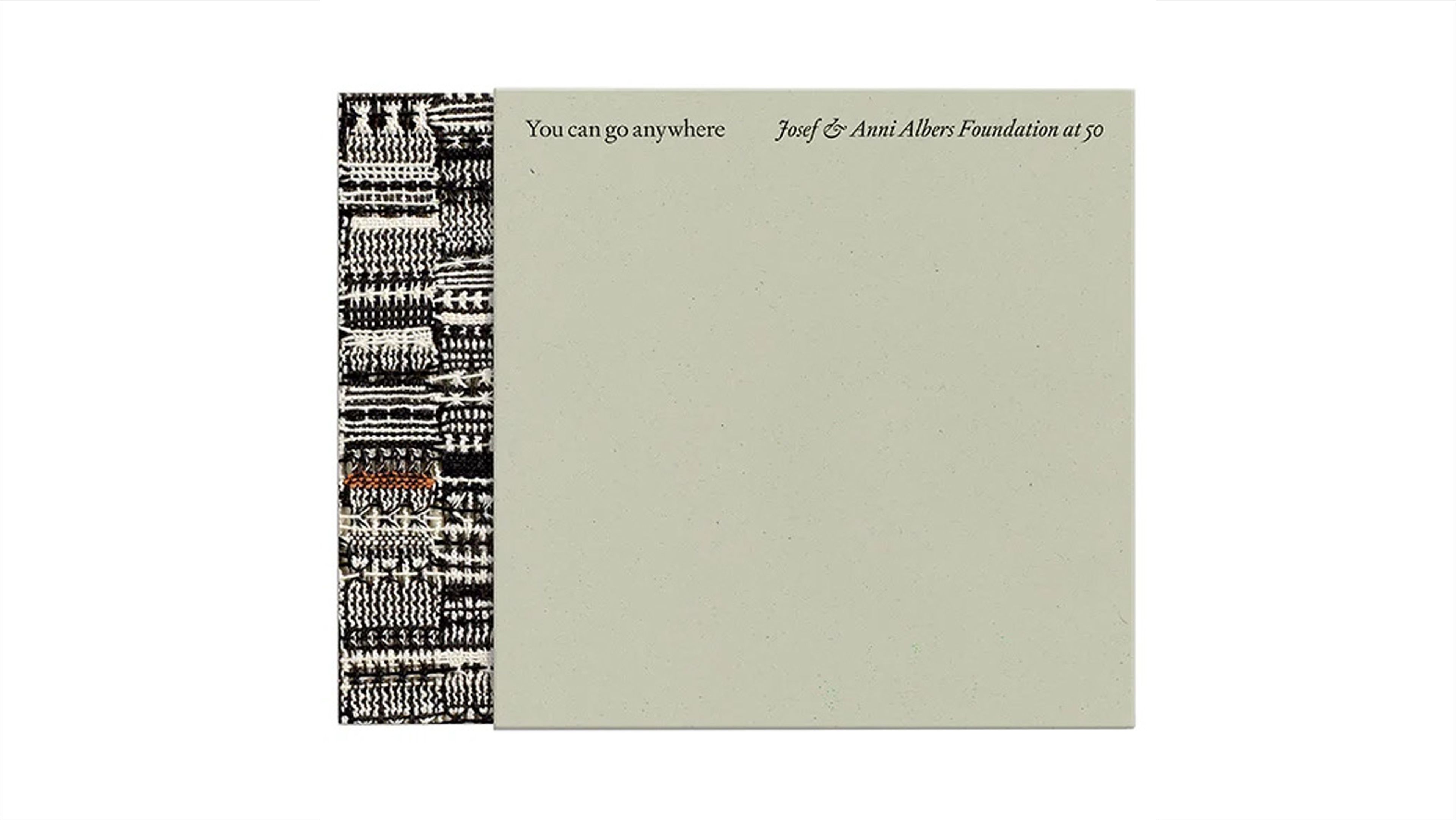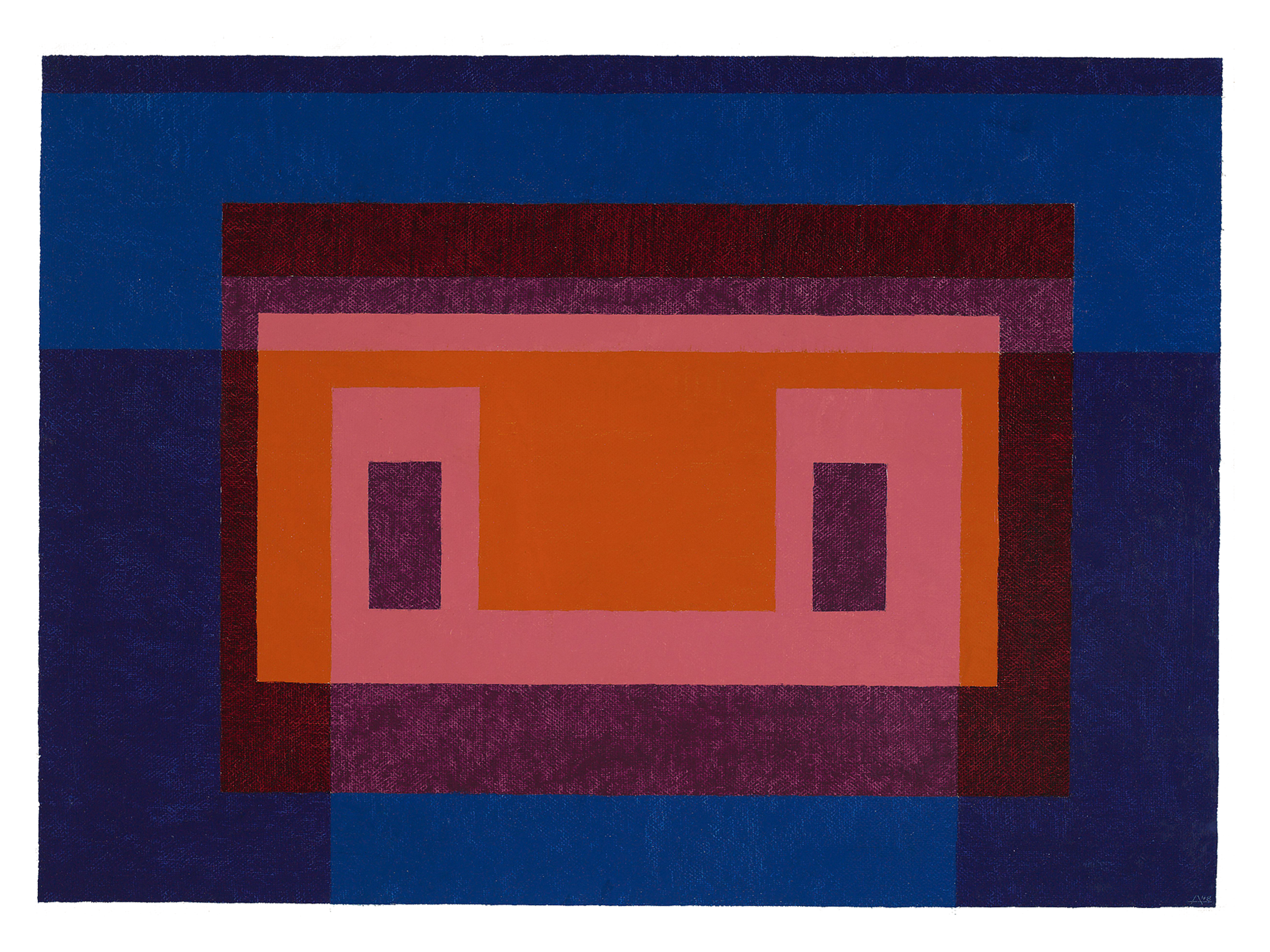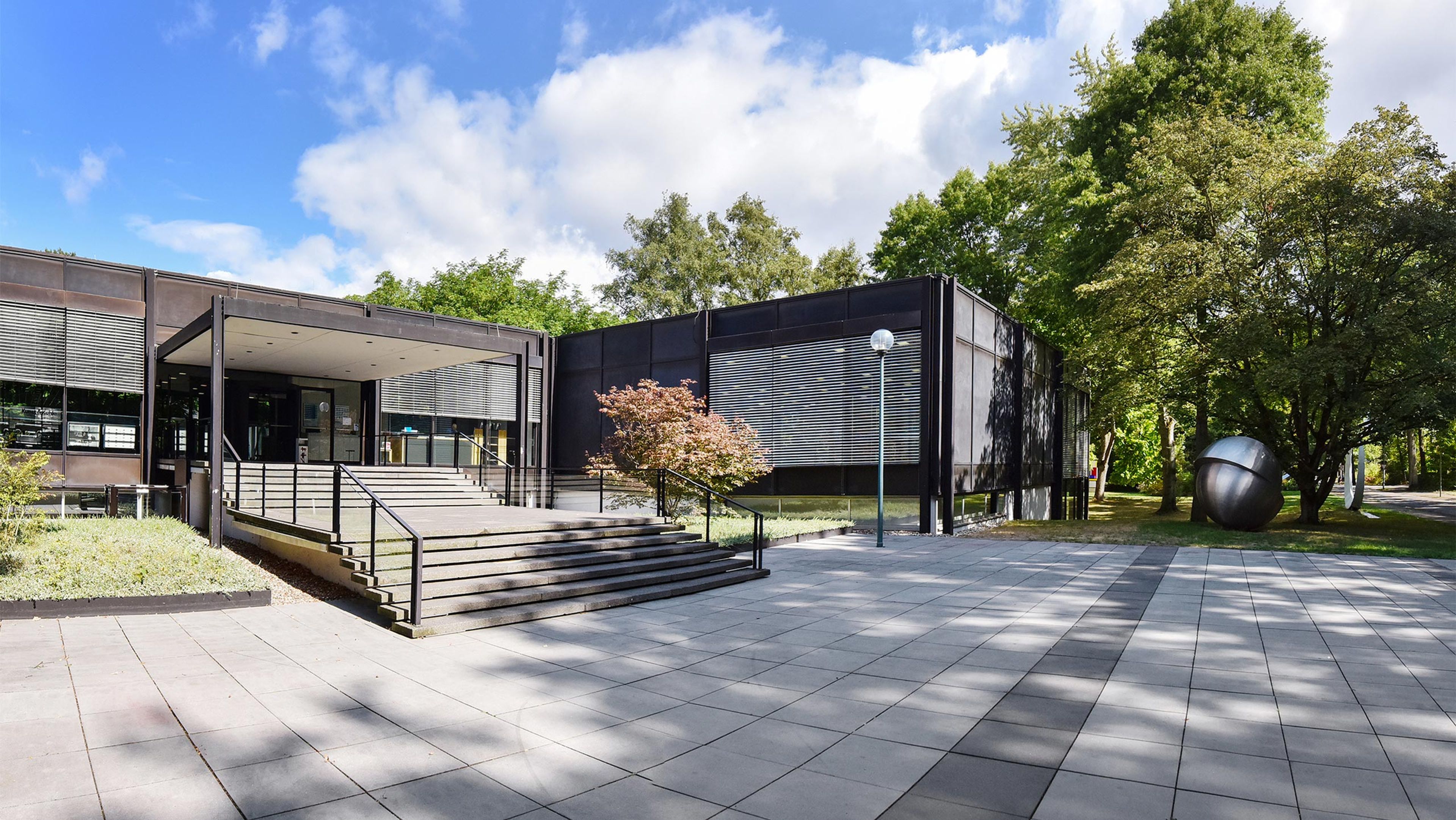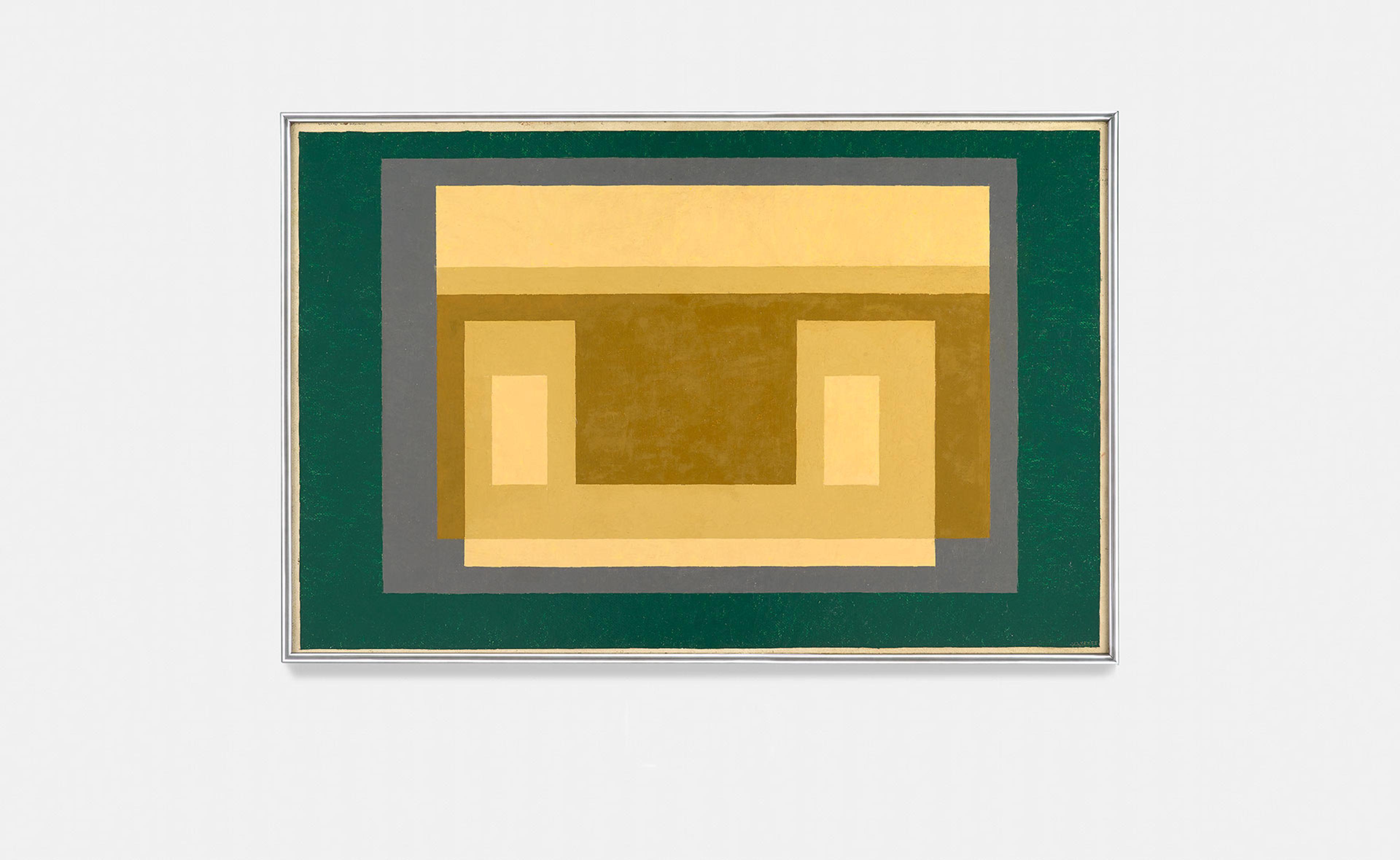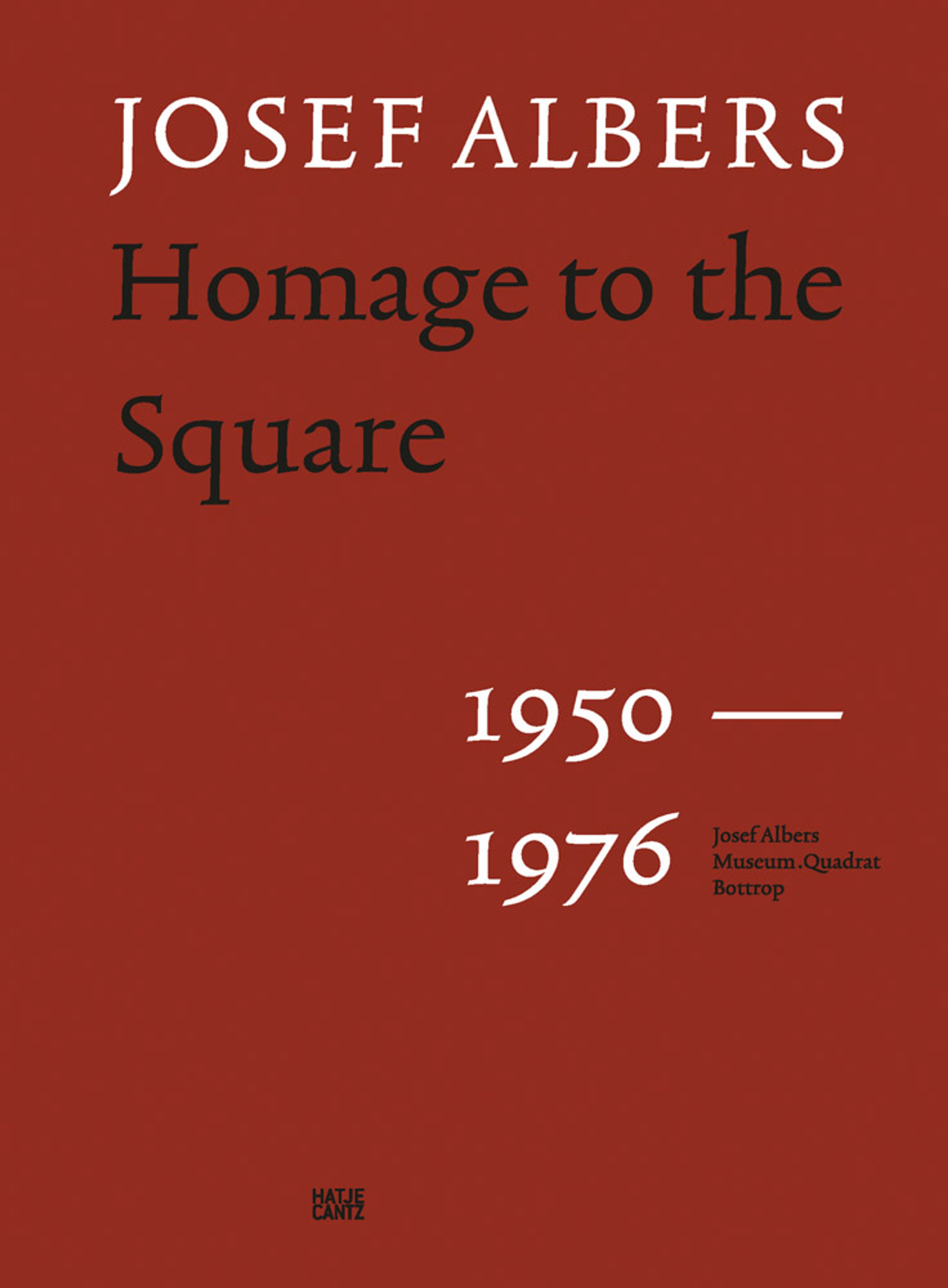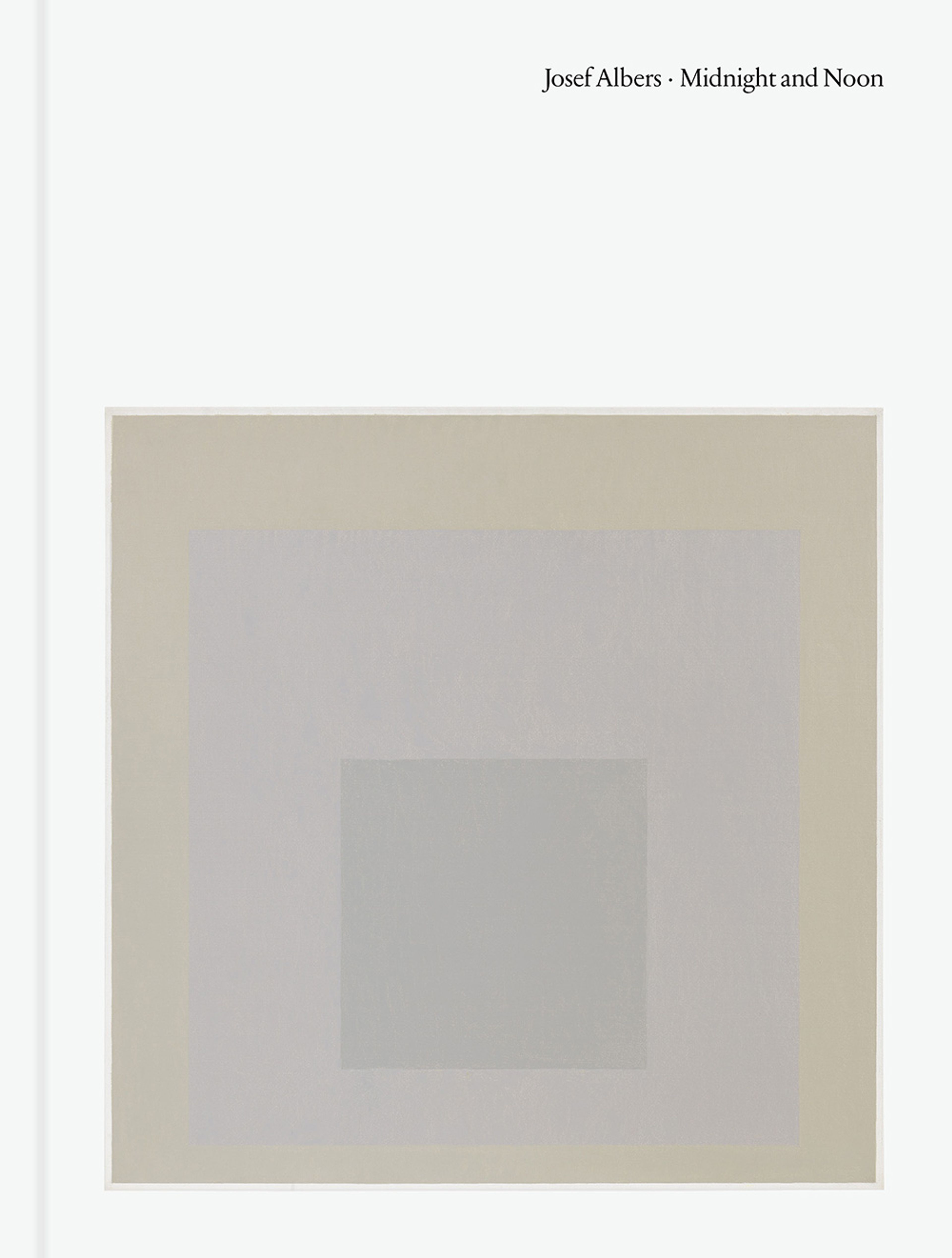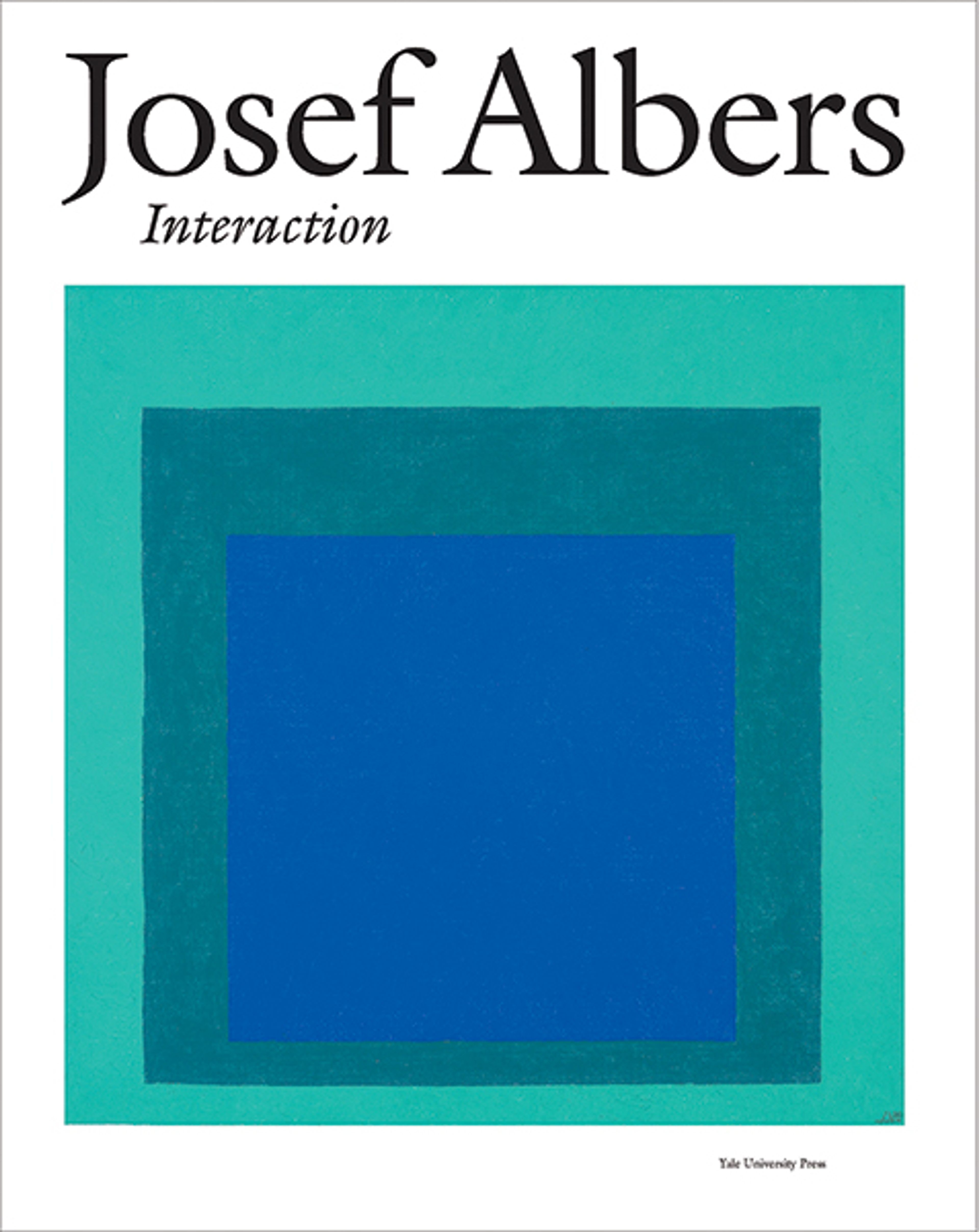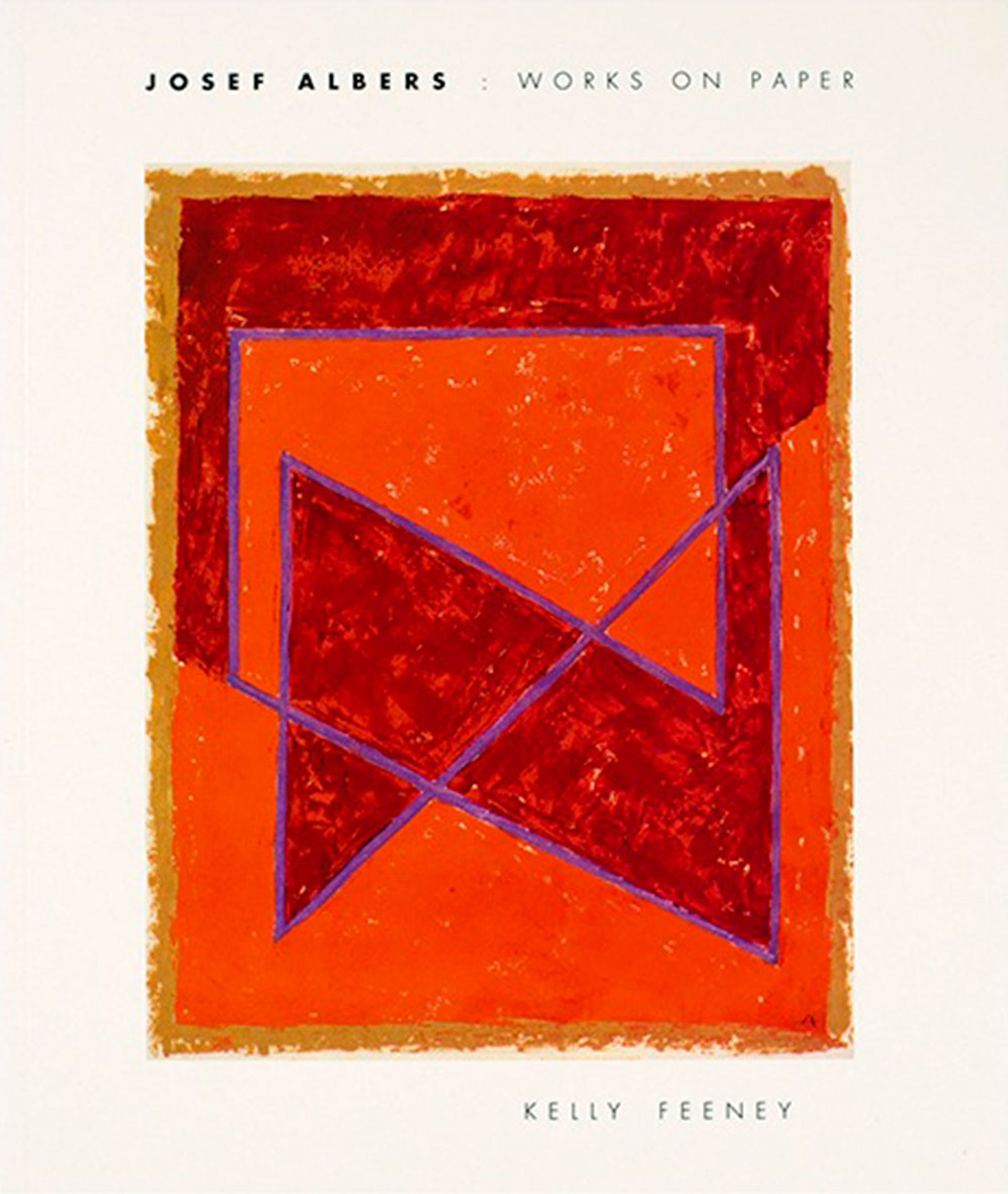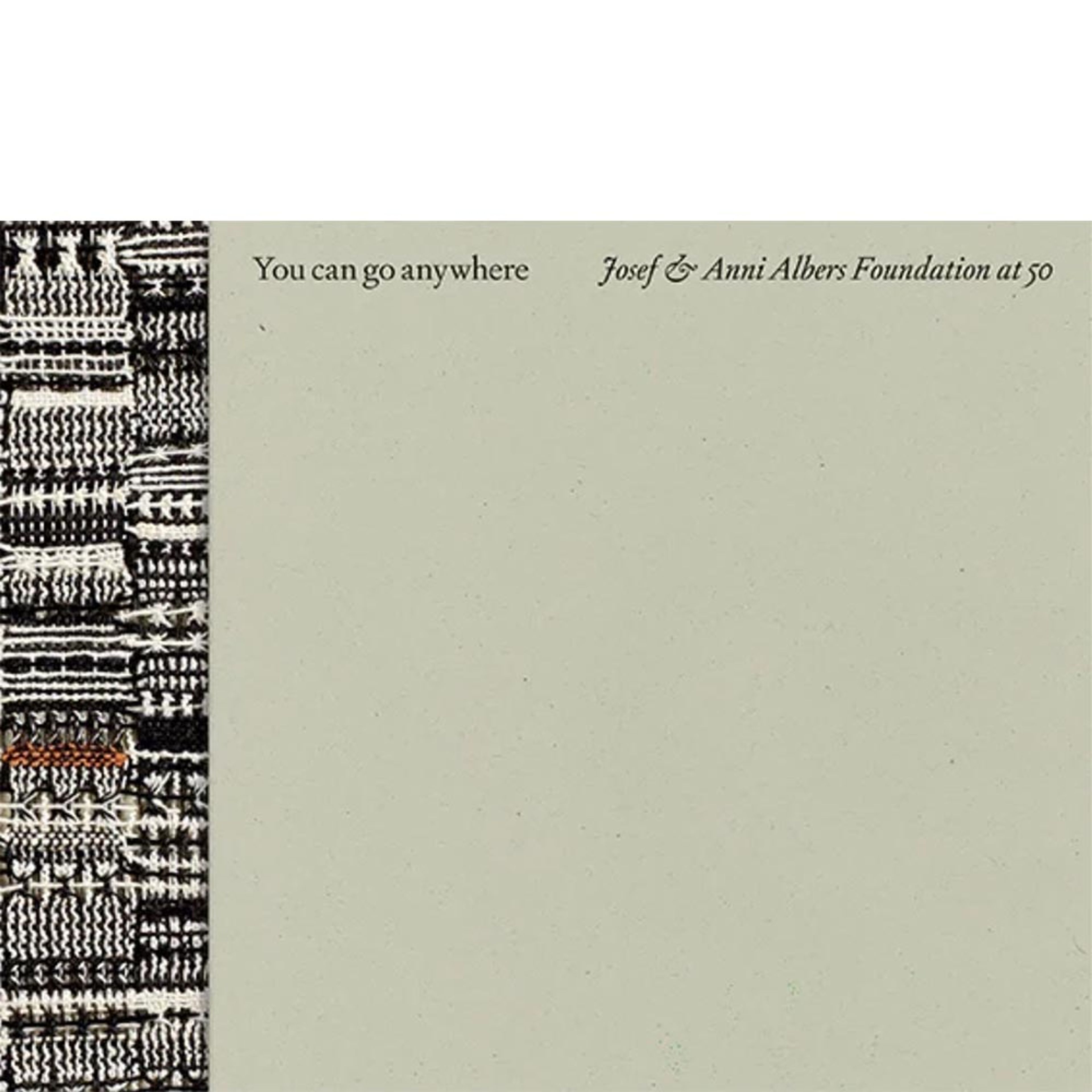Josef Albers
Josef Albers (1888–1976) is considered one of the most influential abstract painters of the twentieth century, as well as an important designer and educator. Albers’s artistic career, which bridged European and American Modernism, consisted mainly of a tightly focused investigation into the perceptual properties of color and spatial relationships.
Learn MoreSurvey
Exhibitions

Explore Exhibitions
Artist News
Biography
Josef Albers (1888-1976) was one of the most influential abstract painters and art teachers of the twentieth century. Albers's artistic career, which bridged European and American Modernism, consisted mainly of a tightly focused investigation into the perceptual properties of color and spatial relationships. Working with simple geometric forms, Albers sought to produce the effects of chromatic interaction, in which the visual perception of a color is affected by the hues adjacent to it. Albers's precise application of color also created plays of space and depth, as the planar colored shapes that make up the majority of his works appear to either recede into or protrude out of the picture plane.
Albers was born in Bottrop, Germany, and studied briefly at the Königliche Bayerische Akademie der Bildenden Kunst, Munich, in 1919 before becoming a student at the Weimar Bauhaus in 1920. In 1922, Albers joined the school’s faculty, first working in stained glass and, starting in 1923, teaching design. In 1933, he and Anni Albers emigrated to North Carolina, where they founded the art department at Black Mountain College. During their time at Black Mountain, Albers began to show his work extensively within the United States, including solo exhibitions at the Addison Museum of American Art, Andover (1935); J.B. Neumann’s New Art Circle, New York (1936, 1938); The Germanic Museum at Harvard University, Cambridge (1936); Katharine Kuh Gallery, Chicago (1937); San Francisco Museum of Art (1940); and the Nierendorf Gallery, New York (1941). The Alberses remained at Black Mountain until 1949 and in 1950 moved to New Haven, Connecticut, where Josef Albers was invited to direct a newly formed department of design at Yale University School of Art. In 1950, too, he developed what would become his seminal Homage to the Square series, which he continued to elaborate until his death in 1976. This body of work was featured in a major exhibition organized by The Museum of Modern Art, New York, in 1964 that traveled to twenty-two venues in the United States and Latin America. Albers retired from teaching in 1958, a few years prior to the publication of his important text Interaction of Color (1963), which was reissued in two volumes in 2013. Following numerous gallery and museum exhibitions, as well as his participation in documenta 1 (1955) and documenta 4 (1968), Albers became the first living artist to be the subject of a solo exhibition at The Metropolitan Museum of Art, New York, with his career-spanning retrospective there in 1971.
More recent exhibitions include Painting on Paper: Josef Albers in America, which originated at the Pinakothek der Moderne, Munich, in 2010 (traveled to Josef Albers Museum, Quadrat, Bottrop, Germany; Louisiana Museum of Modern Art, Humlebæk, Denmark; Kunstmuseum Basel; Centre Georges Pompidou, Paris; Centro de Arte Moderna, Gulbenkian Museum, Lisbon; and the Morgan Library and Museum, New York); Josef Albers: Minimal Means, Maximum Effect at the Fundación Juan March, Madrid, in 2014 (traveled to Henie Onstad Art Centre, Høvikodden, Norway); and A Beautiful Confluence: Anni and Josef Albers and the Latin American World at Mudec, Museo delle Culture, Milan, in 2015 to 2016. From 2016 to 2017, The Museum of Modern Art, New York, presented One and One Is Four: The Bauhaus Photocollages of Josef Albers. In 2017, Josef Albers in Mexico was presented at the Solomon R. Guggenheim Museum in New York and traveled to the Peggy Guggenheim Collection in Venice in 2018. Anni and Josef Albers: Art and Life was on view at the Musée d'Art Moderne de Paris, in 2021, and subsequently traveled to IVAM (Instituto Valenciano de Arte Moderno), Valencia, Spain, in 2022. At the Josef Albers Museum in Bottrop, Germany, Josef Albers: Hommage to the Square was presented from 2022 to 2023.
Since May 2016, The Josef and Anni Albers Foundation has been exclusively represented by David Zwirner. Sonic Albers, which was on view in New York in 2019, marked the gallery’s third solo presentation of Josef Albers’s work, following the exhibitions Grey Steps, Grey Scales, Grey Ladders, presented in New York in 2016, and Sunny Side Up, shown in London in 2017. Albers and Morandi: Never Finished, an exhibition exploring the visual and formal affinities and contrasts between the work of Albers and Giorgio Morandi, was on view in New York in 2021. David Zwirner, Hong Kong presented Josef Albers: Primary Colors, the artist's first solo presentation in Greater China in 2022. David Zwirner, London organized the solo exhibition Josef Albers: Paintings Titled Variants in 2023, which was presented in tandem with the group exhibition Black Mountain College: The Experimenters.
Selected Press
Selected Titles

Request more information

